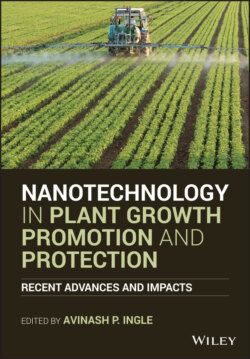Читать книгу Nanotechnology in Plant Growth Promotion and Protection - Группа авторов - Страница 53
3.3.1 Application Methods
ОглавлениеZn is taken up by plant roots, as Zn cations or Zn‐organic molecule complexes, then translocated by the protein transporters through the xylem to different parts of the plant (Figure 3.2). Protein transporters for heavy metals are mainly responsible for Zn transport from rhizodermal and cortex cells into the xylem (Hussain et al. 2004). Without a fully developed Casparian strip Zn can also transport through the extracellular apoplastic pathway (White et al. 2002). But protein transporters involved in Zn translocation through the shoot to the assimilation are still not fully identified (Deinlein et al. 2012).
Plants' leaves can absorb Zn through foliar application. There are several critical factors controlling the adsorption capacity of leaves, including the thickness of the waxy protective layer, the chemical composition and structure of the cuticle, the density of stoma and trichomes, and the physiological state of the plant (Schönherr 2006; Eichert and Goldbach 2008). Environmental factors such as humidity, temperature, and lightning also play important role in Zn adoption by plant leaves (Fernández and Eichert 2009).
Due to the sorption capacity of both plant roots and leaves, Zn NPs can be supplied in different ways (Figure 3.2). Foliar spray application means spraying of NPs suspension over plant leaves, NPs suspension can be sprayed over crop at different intervals depending on crop spices. When Zn NPs are sprayed over leaves, Zn is absorbed by leaves and then distributed to lower parts through the phloem. The substrate mediated application includes the application of NPs to the root zone in soil culture and soilless culture. In soil culture, nano‐fertilizers are mixed with soil after broadcasting. In soilless culture or hydroponic system, Zn NPs are often supplied through mixing with nutrient solution. Zn applied in the root zoon is first adsorbed by roots then translocated to upper parts through xylem and phloem.
